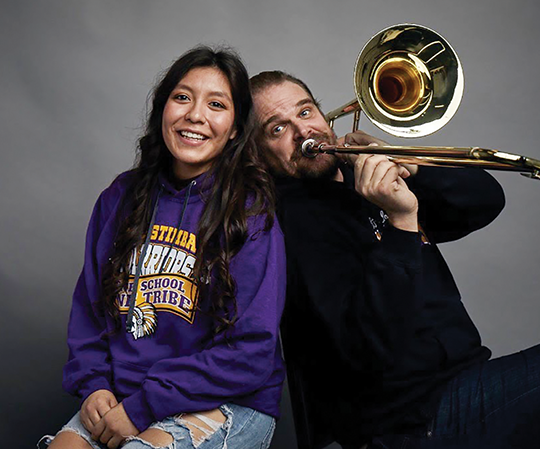While there are a number of Big Time Wrestling fans in the area, many may not know the historic role Modesto has played in the professional wrestling business. From the late 1950s to the mid-‘70s, professional wrestling was a hot ticket at the Uptown Arena in Modesto. With events held on Friday and Saturday nights, names like Pepper Gomez, Ray Stevens, Moon Dog Mayne, Pat Patterson and other historic wrestlers drew large crowds on a regular basis. One man and his camera caught iconic images throughout much of that golden era, Larry Barnhizer.
Barnhizer was born in Riverbank and is currently a resident of Manteca.
He took time recently to reflect on a career that has once again come into the limelight.
“I was always interested in photography and professional wrestling. So when the opportunity came about to cover the events at the Uptown Arena, I wanted to excel at it, and I think I did just that. The thing that drew me into the wrestling world was the interaction between the wrestlers and the fans,” Barnhizer noted with a smile. “At that time, it was always good versus bad and the bad guys would always throw insults toward the fans and the fans would react in a way that was just as entertaining; and I was at ringside for the whole thing. I really enjoyed that part of it.”
It did not take long for promoters to recognize Barnhizer’s talent behind the lens and soon his photos were being featured in prestigious wrestling magazines around the globe.
“Remember, this was a time before the Internet. Wrestling fans used to get their news from these magazines and relied heavily on the content inside, including the photos,” Barnhizer said.
His images included a big 1974 battle between two World Wrestling Entertainment Hall of Famers, Pat Patterson and Don Muraco at the Uptown Arena.
In 1982 Barnhizer received a call from an editor at The Wrestler magazine and was asked if he would cover an event being held in Oakland. The main event featured two more future Hall of Famers. The American Wrestling Association was a big promotion out of Minnesota and made its way to Oakland. In the main event for the Heavyweight title, champion Nick Bockwinkel took on a young Hulk Hogan in front of a sold out crowd.
“He asked if I would cover this event because they knew I lived not too far from the arena. They were interested in Hogan because he had shown promise and the AWA was making a big push with him. So I went to cover it,” Barnhizer said.
Standing in his usual spot, ringside by the turnbuckle posts, Barnhizer spent the evening shooting from different angles. When the action went outside of the ring, he moved out of the way but continued to shoot. The image he got moments later is one of the most recognizable in The Wrestler magazine history. The photo, in the September 1982 edition of the magazine, shows a bloodied Hogan grabbing Bockwinkel by the hair and ramming him into the apron. The image was used as part of a two page spread in the magazine.
“When the magazine came out, I was blown away. I knew I had something special on my hands, but when it came out in the publication I was speechless and I am very proud of that picture,” Barnhizer said of his iconic shot. “Less than two years later Hogan became larger than life. I am so fortunate that I was a part of the action that night. Can you imagine if I did not go that night? I would not have met Hogan and would not have gotten that shot.”
In 2016, the book “When It Was Big Time” by Rock Rims was released. This book captures the early years of Northern California wrestling history and in the thick of it was Barnhizer. Rims includes an entire chapter on Barnhizer’s contribution to the business and features his photography throughout the book. The 300-plus page book includes wrestling greats from Pat Patterson to Rowdy Roddy Piper.
“It is an amazing book. And when he (Rims) told me that I was featured in it, it was a big accomplishment in my lifetime,” said Barnhizer. “It made me feel that my life’s work is being immortalized in a way. I had the time of my life doing it and I have zero regrets about it.”





